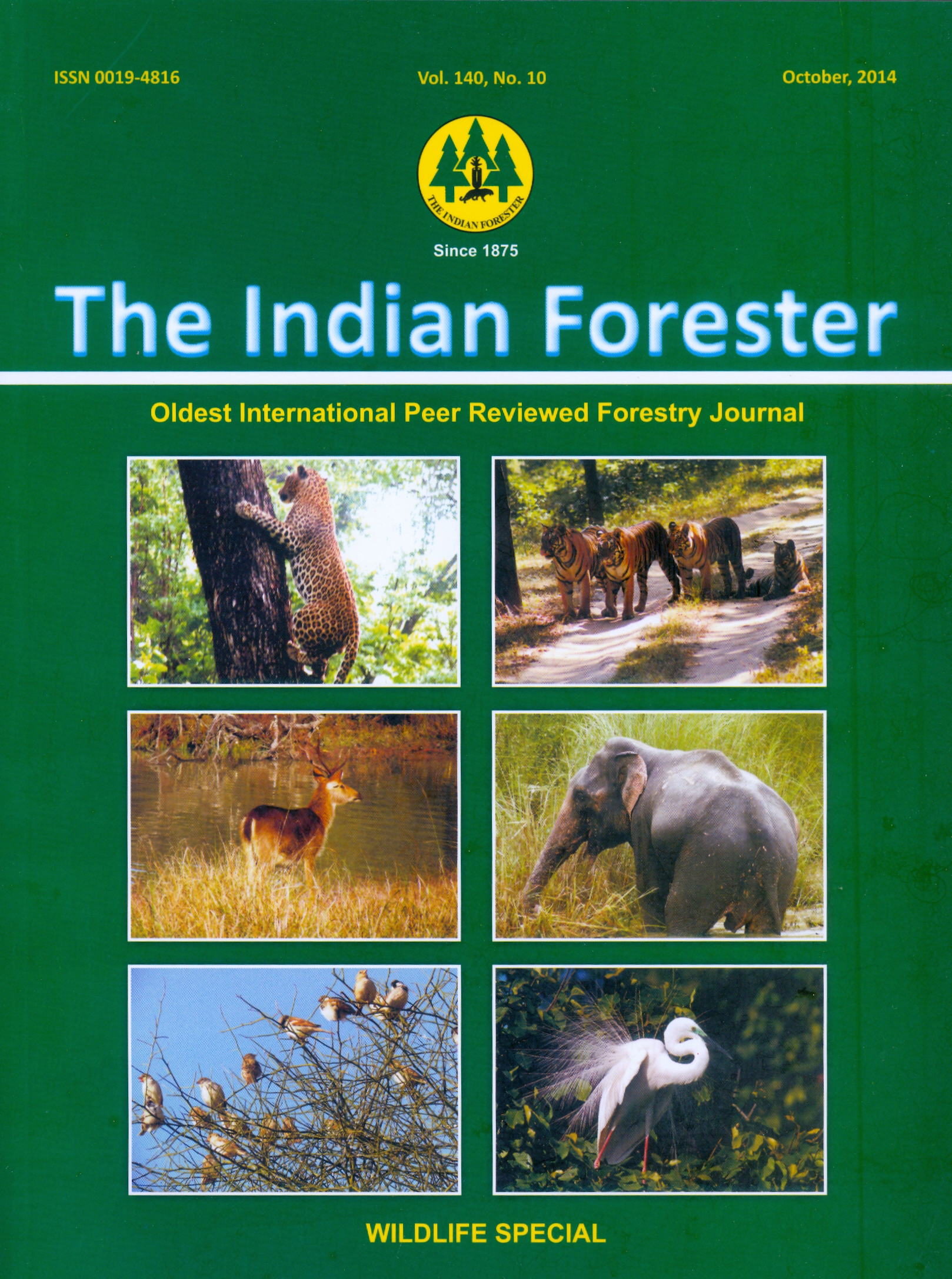Endemic Hump-nosed Pit Viper, Hypnale Hypnale
DOI:
https://doi.org/10.36808/if/2014/v140i10/53502Abstract
No AbstractReferences
Bossuyt F., Meegaskumbura M., Beenaerts N., Gower D.J., Pethiyagoda R., Roelants K., Mannaert A., Wilkinson M., Bahir M.M., Manamendra-Arachchi K., Ng P.K.L., Schneider C.J., Oommen O.V. and Milinkovitch M.C. (2004). Local endemism within the Western Ghats–Sri Lanka biodiversity hotspot. Science, 306: 479–481.
Chandramouli S.R. and Ganesh S.R. (2010). Herpetofauna of southern Western Ghats, India – reinvestigated after decades. Taprobanica,2(2): 72-85.
Ishwar N.M., Chellam R. and Kumar A. (2001). Distribution of forest floor reptiles in the rainforest of Kalakad-Mundanthurai Tiger Reserve,South India. Current Science, 80(3): 413-418.
Jeeva S., Kiruba S., Mishra B.P., Venugopal N., Regini G.S., Das S.S.M. and Laloo R.C. (2005). Diversity of medicinally important plant species under coconut plantation in the coastal region of Cape Comorin. Flora and Fauna, 11(2): 226-230.
Joseph J.K., Simpson I.D., Menon N.C.S., Jose M.P., Kulkarni K.J., Raghavendra G.B. and Warrell D.A. (2007). First authenticated cases of lifethreatening envenoming by the hump-nosed pit viper (Hypnale hypnale) in India. Transactions of the Royal Society of Tropical Medicine and Hygiene, 101(1): 85-90.
Karunarathne S., Udayakumara Y., Govindapala D.and Fernando H. (2013). Type IV renal tubular acidosis following resolution of acute kidney injury and disseminated intravascular coagulation due to hump-nosed viper bite. Indian Journal of Nephrology, 23(4): 294-296.
Kingston C., Mishra B.P., Nisha B.S., Jeeva S., Livingstone C. and Laloo R.C. (2006). Diversity and distribution of economically important plants in traditional homegardens of Kanyakumari district, Tamil Nadu, southern Peninsular India. Journal of Nature Conservation, 18 (1):41-54.
Kiruba S., Ruba Gnana Solomon S., Israel Stalin S., Jeeva S., Sukumaran S., Prakash J.W., Regini G.S. and Das S.S.M. (2008). Diversity of larval host plants of Kanyakumari district. Journal of Basic and Applied Biology, 2(2): 16-30.
Maduwage K., Silva A., Manamendra-Arachchi K. and Pethiyagoda R. (2009). A taxonomic revision of the South Asian hump-nosed pit vipers (Squamata: Viperidae: Hypnale). Zootaxa, 2232: 1-28.
Meegaskumbura M., Bossuyt F., Pethiyagoda R., Manamendra-Arachchi K., Bahir M., Milinkovitch M.C. and Schneider C.J. (2002). Sri Lanka:an amphibian hot spot. Science, 298: 379.
Pyron R.A., Kandambi H.K.D., Hendry C.R., Pushpamal V., Burbrink F.T. and Somaweera R. (2013). Genus-level phylogeny of snakes reveals the origins of species richness in Sri Lanka. Molecular Phylogenetics and Evolution, 66(3): 969-978.
Sawant N.S., Jadhav T.D. and Shyama S.K (2010). Habitat suitability, threats and conservation strategies of hump-nosed pit viper Hypnale hypnale Merrem (Reptilia: Viperidae) found in Western Ghats, Goa, India. Journal of Threatened Taxa, 2(11): 1261-1267.
Silva A., Gunawardea P., Weilgama D., Maduwage K. and Gawarammana I. (2012). Comparative in-vivo toxicity of venoms from South Asian hump-nosed pit vipers (Viperidae: Crotalinae: Hypnale). BMC Research Notes, 5: 471.
Sukumaran S. and Jeeva S. (2008). A floristic study on miniature sacred forest at Agastheeshwaram, Southern Peninsular India. EurAsian Journal of Biosciences, 2: 66-72.
Sukumaran S., Jeeva S., Raj A.D.S. and Kannan D. (2008). Floristic diversity, conservation status and economic value of miniature sacred groves in Kanyakumari District, Tamil Nadu, Southern Peninsular India. Turkish Journal of Botany, 32: 185-199.
Sukumaran S., Jeeva S. and Prasad M.N.V. (2010). Sacred forests of South Travancore, South India. Biological Diversity and Conservation,
(3): 10-14.
Sukumaran S. and Jeeva S. (2011). Angiosperm flora from wetlands of Kanyakumari district, Tamilnadu, India. Checklist, 7(4): 486-495.
Downloads
Downloads
How to Cite
Issue
Section
License
Unless otherwise stated, copyright or similar rights in all materials presented on the site, including graphical images, are owned by Indian Forester.





